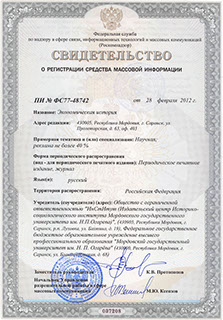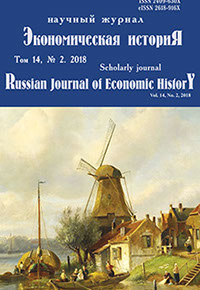Экономическая историЯ
Russian Journal of Economic History
ISSN 2409-630X (Print)
ISSN 2618-916X (Online)
Expert board:
- Scientific Council of RAS on economic history;
- Research and Educational Center «The economic history of Central Russia and the Middle Volga region» of Ogarev Mordovia State University;
- Center of Economic History of Lomonosov Moscow State University
Navigation
Certificate of registration

SSN 2409-630X (Print), ISSN 2618-916X (Online)
DOI: 10.15507/2409-630X.041.014.201802.129-140
Andrey V. Keller
Ural Federal University (Ekaterinburg, Russia), e-mail: a.v.keller@urfu.ru
ORCID: orcid.org/0000-0002-9086-1079.
CRAFT GUILDS – CLOSED CORPORATIONS OR OPEN SOCIAL INSTITUTIONS DURING INDUSTRIALIZATION (19th TO THE BEGINNING OF THE 20th CENTURY)?
Introduction. The subject of this article is the dynamics of the development of crafts in St. Petersburg in the period of protoindustrialization before the 1860s and, in particular, during the take-off of industrialization between the 1870s and 1900s. The purpose of the article is to demonstrate the development of crafts in the capital in the defined period, especially the transformations that occurred during the rapid industrialization of the last third of the 19th century. Materials and Methods. In terms of its theoretical and methodological strategy, this article uses the methods of socio-economic history and comparative studies. This choice to embark on this research was determined by a range of interrelated theoretical (the analysis of the scholarly literature, comparative analysis, synthesis, systematization) and empirical (the study and synthesis of normative legal documents) methods. Results. Craft production, which had been for a long time the basis of the urban economy before the appearance of manufactures in the 18th century and factories in the 19th, remained an important economic factor far as these new developments. Craft workshops defined the quality of urban life, creating facilities without which it would be impossible to imagine the capital in the imperial period. It is shown in the article that craft production developed and grew, surviving economic up and downs together with heavy industry. Discussion and Conclusions. A factor of significant importance was government policy, especially after the Great Reforms of the 1860s: this took into account both the requirements of heavy industry and the conditions upon which light industry existed. Craft as a form of production could not be replaced by a large industry due to the expansion of the specifics of supply and demand in the market. Professional artisans filled the most important niche in the capital’s economy and ensured the development of the sphere of services and goods in “step-by-step accessibility”, which significantly improved the quality of life of the urban environment.
Keywords: urban crafts, industrialisation, craftsmen, St. Petersburg
For citation : Andrei V. Keller. Craft Guilds – Closed Corporations or Open Social Institutions during Industrialization (19th to the Beginning of the 20th Century). Ekonomicheskaya istoriya = Russian Journal of Economic History. 2018; 14(2): 129–140. (In Russ.). DOI: 10.15507/2409-630X.040.014.201801.129-140
© Ogarev Mordovia State University. History and Sociology Institute, 2017
68, Of. 411, Bolshevistskaya St., 430005, The editorial office of the scholarly journal «Russian Journal of Economic History»
Tel.: (8342) 24-25-90; 27-07-11, Fax: (8342) 24-25-90, E-mail: jurnal-econom-hist@isi.mrsu.ru
Designed by A. Napalkov, Email: napalkov@isi.mrsu.ru

